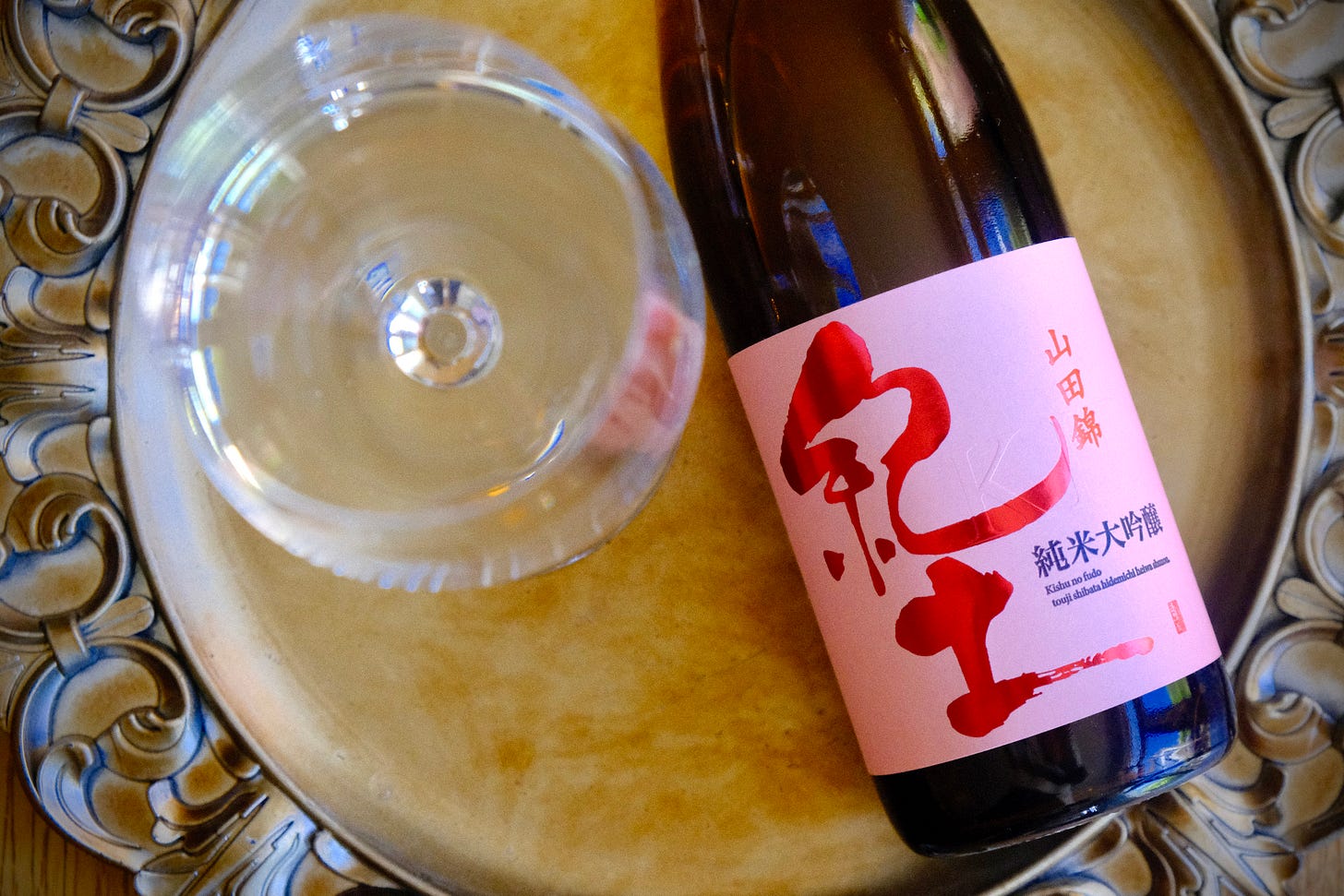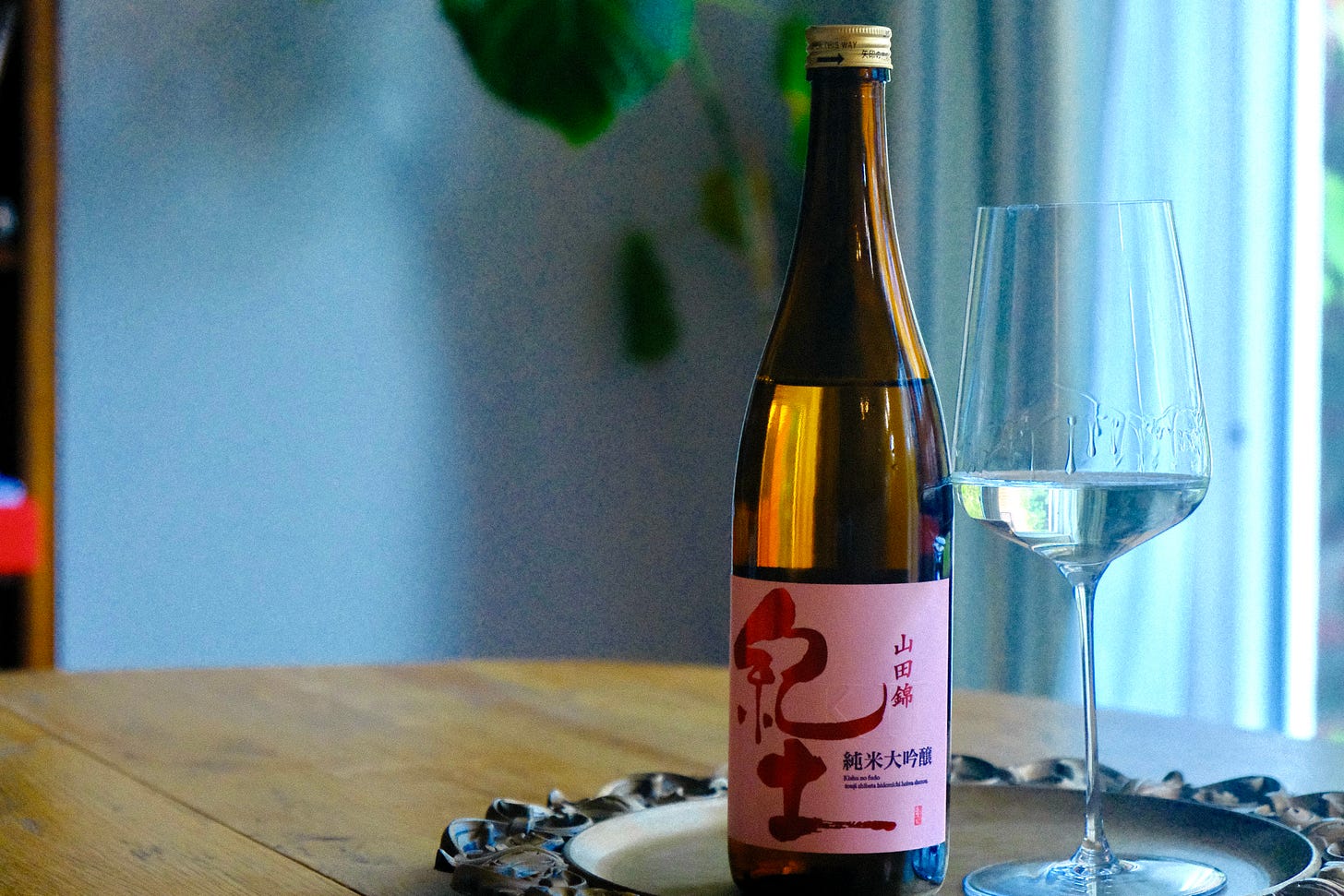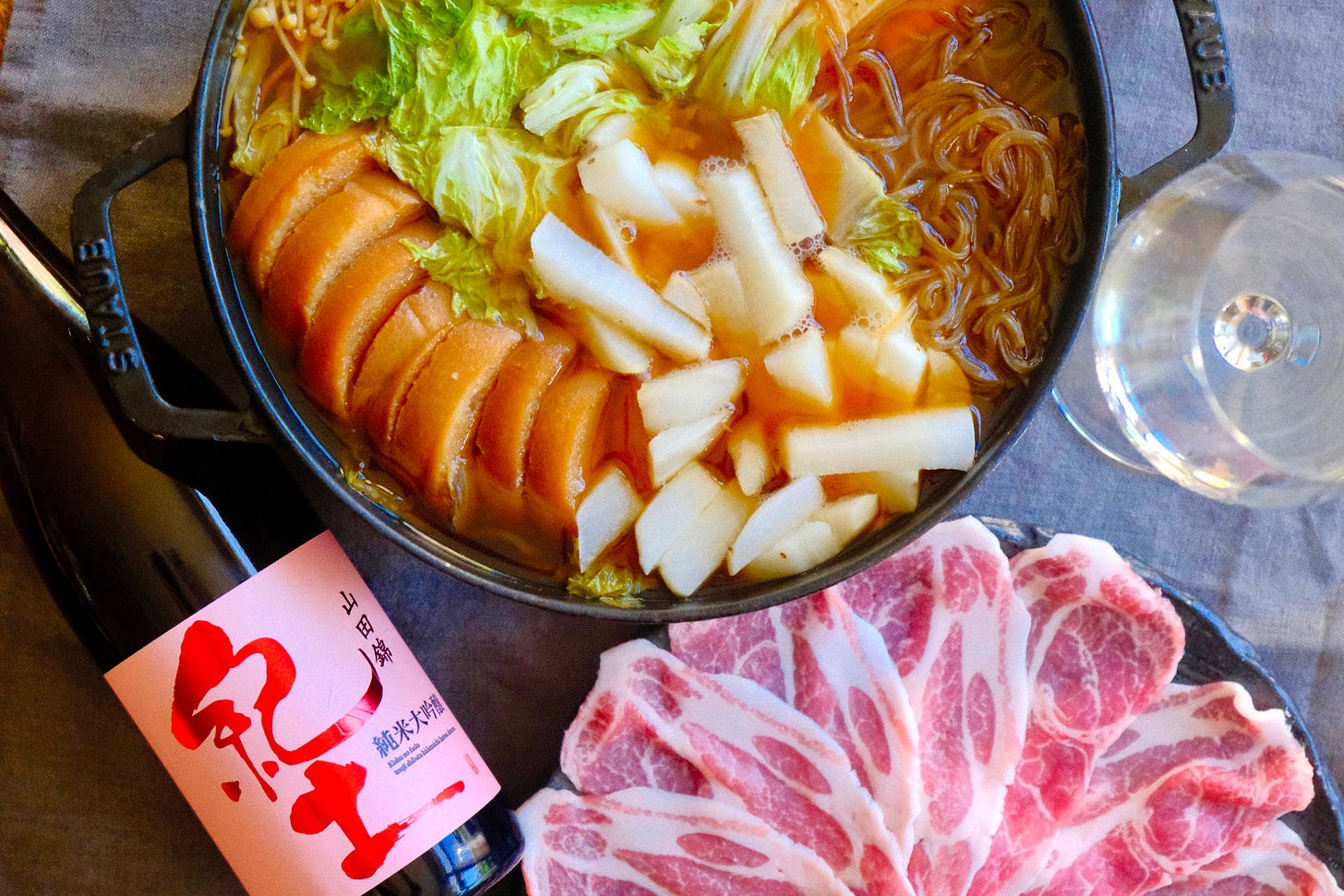Sake 101 #7: Understanding Yeast
Why sake brewers choose precision over spontaneity—and what that reveals about Japanese craftsmanship.
In the world of fine wine, wild yeast is often celebrated for bringing complexity and a strong sense of place. In sake, the approach is quite different. Yeast is deliberately selected, carefully controlled, and purposefully used—even in the most premium styles.
Wine professionals are well aware that both wild and cultured yeasts have their roles. Still, it’s not uncommon to hear the question:
“Is sake ever made with wild yeast?”—usually from the perspective that spontaneous fermentation is more authentic or place-driven.
In reality, the vast majority of sake is brewed with cultured yeast. These strains—developed and distributed by the Brewing Society of Japan—are numbered, standardized, and chosen for their specific aromatic traits. For those coming from the wine world, it can be surprising just how intentional and widespread this managed approach truly is.
But this isn’t just about style or preference. It reflects Japan’s environment, the technical demands of sake brewing, and a cultural value system rooted in precision.
In this post, we explore how yeast shapes not only sake’s aroma, but its identity.
Chapter 1 — Yeast Cultures Reflect Brewing Cultures
Wine and sake both begin with fermentation—but the paths they’ve taken couldn’t be more different.
In Europe, winemaking has long embraced natural spontaneity, supported by an environment that makes it possible. Grapes, once crushed, contain everything they need to ferment: sugar in the juice and wild yeast clinging to their skins or drifting in the air. Of course, a meticulous eye is essential, but this natural readiness allowed wine to be made even in homes with little more than fruit, a vessel, and time. Over generations, the microbial communities that shaped these wines became tied to place—subtle, living signatures that helped give rise to the idea of terroir.
Sake, on the other hand, follows a different logic.
Unlike grapes, sake rice contains no fermentable sugar and no natural yeast. Koji mold must first convert starch into sugar through saccharification. Unlike grape must, sake mash has more sugar and less acidity, making it far more vulnerable to microbial spoilage. To prevent contamination, brewers must first create a low-pH environment using lactic acid. Saccharification and fermentation then happen simultaneously in a single tank—requiring precise coordination from the very beginning. Unlike most wines, which rarely exceed 15–16% alcohol, sake typically ferments to 17–20%, making ambient yeast fermentation more difficult to complete and more vulnerable to stress.
Add to that Japan’s warm, humid climate—ideal for yeast, but also for spoilage organisms—and the risks compound. Before temperature control and sanitation technologies, working with wild microbes was unpredictable at best, and catastrophic at worst.
Faced with these challenges, Japanese brewers turned to control. What may have started as a practical necessity became a cultural value. Sake brewing came to prize stability, precision, and design.
In sake, precision serves a different goal. It’s not about expressing a landscape—it’s about mastering a process. The brewer doesn’t step aside to let nature speak. They design the conditions for fermentation to sing the same note—beautifully—again and again. Like a well-practiced ritual, sake brewing seeks not improvisation, but the quiet elegance of repeating a perfected flow.
Both cultures value craftsmanship—but they define it differently.
One seeks to reveal nature’s hand. The other seeks to guide it with care.
Wine developed a wild yeast tradition because it could.
Sake developed a managed yeast tradition because it had to.
Chapter 2 — Precision of the Process
If sake brewing is about control, nowhere is that more evident than in how fermentation begins.
Unlike wine, which contains enough natural acidity to deter spoilage organisms, sake mash is more vulnerable—less acidic, more sugary, and brewed in a wetter world. To create a safe environment for yeast, brewers must build acidity first.
In modern brewing, this is done through the quick starter method: adding food-grade lactic acid directly to the fermentation starter to quickly lower the pH. It’s efficient and widely used—giving the yeast a clean, stable slate.
But some brewers still choose tradition.
In classic methods, acidity is allowed to develop slowly and naturally, using ambient microbes. These styles—kimoto and yamahai—are long, cold, and unhurried. They produce sake with greater depth, higher acidity, and broader texture. They also demand more skill and vigilance. (And yes, these terms often appear on the label.)
Regardless of method, the goal is the same: to prepare the stage so yeast can perform.
Once the environment is ready, cultured yeast is introduced. Every variable—temperature, timing, ingredient balance—is tailored to that strain’s needs. From day one, fermentation isn’t left to chance. It’s conducted.
The main fermentation follows a unique three-stage build-up. Steamed rice, koji, and water are added gradually over several days. This layering supports simultaneous saccharification and fermentation—one breaking down starch into sugar, the other converting sugar into alcohol—all guided by human hands.
The goal isn’t simply to produce alcohol. It’s to shape a living liquid—one that speaks with clarity, elegance, and intent.
Chapter 3 — Yeast as Identity: From Kyokai Numbers to Wild Expressions
In wine, yeast rarely takes the spotlight. In sake, it can define the style.
Japan didn’t just adopt cultured yeast—it built an entire institutional framework around its use. In the early 20th century, the Brewing Society of Japan, backed by the government and tax authorities, began isolating pure yeast strains and distributing them nationwide. These efforts reduced failure, stabilized quality, and ensured taxable production.
Each strain was given a number—Kyokai No. 7, 9, 1801, and beyond—and each brought its own fermentation style, alcohol tolerance, and aromatic fingerprint.
Some highlight ethyl caproate (apple, melon, floral), others isoamyl acetate (banana, bubblegum). Still others prioritize restraint or structure. If you’ve studied sake through WSET or JSS, you’ve likely memorized a few.
But yeast does more than shape aroma. It contributes to texture and acidity too. Malic and succinic acids are created by yeast, together with the lactic acid in the fermentation starter are the major acids found in sake.
By choosing a specific strain, brewers are also choosing how expressive, restrained, or modern their sake will feel. It’s a different aromatic language, shaped not by vineyard or vintage, but by fermentation strategy.
Today, brewers are expanding the palette.
Regional research centers have developed local strains to reflect culinary culture and climate. Kumamoto yeast (Kyokai No. 9) remains widely used. CEL-24 from Kochi creates intensely fruity, juicy sake. AK-1 (Akita) and YK-009 (Yamagata) bring out water and rice character with balance and finesse.
Elsewhere, the Tokyo University of Agriculture has developed “flower yeasts,” derived from blossoms like begonia and Queen of the Night. These yield soft, aromatic sake with delicate alcohol and floral lift.
Still others turn to wine yeasts, as seen in MASUIZUMI GREEN, which drinks more like a Loire white than a traditional junmai.
And at the far edge of the spectrum, some brewers return to wild fermentation. Aramasa and Hanatomoe use ambient microbes and traditional methods to produce sake that is earthy, alive, and profoundly complex.
Let’s introduce one sake brewed with one of those iconic strains.
Featured Sake: KID Junmai Daiginjo (Heiwa Shuzō, Wakayama)
Yeast: Kumamoto yeast (Kyokai No. 9)
Crafted by Heiwa Shuzō in Wakayama, KID Junmai Daiginjo is a refined, modern expression of balance and youthful precision. Made from Yamadanishiki rice polished to 50% and fermented with Kyokai No. 9, it showcases the elegant potential of this classic strain.
Tasting Note
The nose is fragrant and layered—apple, melon, lychee, peach, pineapple, blossom—woven with delicate rice sweetness, cotton candy, and a subtle touch of mint or orange peel.
The palate is silky and elegant, with gentle off-dry sweetness framed by juicy acidity and lifted by a delicate umami texture. The finish is long, clean, and harmonious.
Serving Suggestion
Recommended temperature: 8–12°C (gently chilled)
Pairings:
White-fleshed fish, sashimi, light starters
Fresh burrata with peach or melon
Ceviche with citrus and herbs
Goat cheese salad with pear and toasted nuts
Shrimp tartare with olive oil and yuzu zest
Ricotta crostini with honey and thyme
While KID Junmai Daiginjo pairs beautifully with light, delicate starters, its refined sweetness and juicy acidity also make it surprisingly versatile with richer dishes—like the one pictured. A soy-based broth made with mirin, dashi, and a touch of sugar adds depth to Iberian pork shabu-shabu, showcasing the sake’s ability to complement both subtle and savory flavors.
Final Reflection — What Yeast Reveals
For wine lovers, the question “Is sake ever made with wild yeast?” is a fair one. But beneath it lies something deeper: assumptions about authenticity, place, and process.
Sake doesn’t fit neatly into wine’s logic.
In wine, terroir is often rooted in geography. In sake, it lives in the process. Yeast is not incidental—it’s expressive. It’s a choice. And it speaks volumes about what a brewer wants to say.
If understanding soil deepens your love for wine, understanding process may deepen your love for sake.
Because fermentation doesn’t just happen. It’s a conversation—between nature, people, and intent. And nowhere is that conversation more intentionally shaped—or more reflective of cultural values—than in sake.
If you work in wine retail or hospitality... and you're starting to see sake pop up on your shelves or wine lists—this series is for you.
Every Tuesday, I explore foundational sake topics from a wine-savvy lens—without the jargon, with plenty of flavor. On Fridays, I share unexpected food and wine (or sake) pairings from across Asia and beyond.
👉 Next up: Reading a Label: How to Decode a Sake Bottle (and Spot the Cool Ones)
👉 Ready to talk sake like you talk wine? Subscribe now and join a growing circle of curious professionals—one bottle at a time.
🍶 Are you a fellow Substack writer exploring food, drink, or fermentation? If this content resonates with you or your audience, I’d be honored to be included in your recommendations. Let’s help more curious readers discover great work.
Sake 101:偶然ではなく、設計された酵母
―なぜ日本酒は自然発酵ではなく、精密な発酵を選ぶのか? そこから見える、日本的クラフトマンシップの本質とは
ワインの世界では、野生酵母による発酵が複雑さや“土地の個性”を表すものとして称賛されることがよくあります。けれども日本酒の世界では、それとはまったく違うアプローチがとられています。日本酒では、酵母は意図的に選ばれ、厳密に管理され、そして明確な目的のもとに使われています。しかも、それはプレミアムな酒であっても例外ではありません。
ワインの専門家であれば、自然酵母と培養酵母の両方に役割があることをご存知でしょう。それでも「日本酒って、自然酵母で造られることはあるの?」という質問を受けることは少なくありません。多くの場合、それは「自然発酵こそが本物だ」という価値観に基づいています。
実際には、日本酒の大半は培養酵母で造られています。これらの酵母は、政府の支援を受けた日本醸造協会によって開発・頒布されており、それぞれに番号がつけられ、香りの特徴ごとに使い分けられています。ワインの世界から来た人にとっては、この“管理された酵母文化”がここまで浸透していることに驚くかもしれません。
けれども、これは単なるスタイルや嗜好の違いではありません。日本の自然環境、日本酒造りの技術的な要請、そして文化的に根付いた「精度」への価値観が深く関わっています。
今回の記事では、酵母がどのように日本酒の「香り」だけでなく、「個性」をも形づくっているのかを見ていきます。
第1章──酵母の文化は醸造文化を映す
ワインも日本酒も、発酵から始まる──しかし、その歩んできた道はまったく異なります。
ヨーロッパでは、ワイン造りは長い間、自然発酵という偶然性を受け入れてきました。ブドウは潰すと、果汁の糖分と果皮や空気中の野生酵母によって自然に発酵が始まります。もちろん、品質の安定には繊細な注意が必要ですが、基本的には果実と容器、そして時間があれば、家庭でも村でもワインを造ることができたのです。何世代にもわたってその土地の微生物がワイン造りに関わることで、地域ごとの個性が生まれ、「テロワール」という考え方も形成されていきました。
一方、日本酒はまったく違う論理に基づいています。
ブドウとは異なり、日本酒に使う精米された米には、発酵に必要な糖も酵母も含まれていません。まず麹菌を使ってデンプンを糖に変える「糖化」という工程が必要になります。さらに、ワインと違って酒母(もろみ)は糖分が多く酸が少ないため、雑菌のリスクが高くなります。このため、日本酒ではまず乳酸で酸性の環境を意図的に作り、雑菌の繁殖を防ぎます。そして糖化とアルコール発酵は、1つのタンクの中で同時に進む必要があり、最初から高精度なコントロールが求められます。さらに、日本酒はワインよりもアルコール度数が高く、通常17〜20%にまで発酵させるため、野生酵母にとってはより過酷な環境です。
加えて、日本の高温多湿な気候は、酵母だけでなく雑菌の繁殖にも適しています。温度管理や衛生技術が発達する前の時代には、自然発酵はうまくいかないどころか、醪がダメになることも多々ありました。
こうした環境のなかで、日本の酒造家たちは「管理」を選びました。最初は生き残るための手段だったかもしれませんが、それはやがて文化的な価値観へと昇華されていきます。日本酒は偶然性よりも、安定性・精度・設計の美を重んじるようになったのです。
日本酒における「精密さ」は、自然の表現ではなく、プロセスの完成を目的としています。杜氏は自然に任せるのではなく、狙ったとおりに美しく発酵を進める環境を、自らの手で設計していきます。まるで稽古を重ねた所作のように──日本酒の美しさは、即興性ではなく、完璧な流れを静かに繰り返す中にあります。
どちらの文化も「クラフトマンシップ」を尊重しますが、その定義は異なります。
ひとつは、自然をそのまま映し出すこと。もうひとつは、自然を丁寧に導くこと。
ワインが野生酵母の文化を築いたのは、それが「可能だった」から。
日本酒が培養酵母の文化を築いたのは、それが「必要だった」からなのです。
第2章 ― プロセスに宿る緻密さ
コントロールの象徴的な場面は、発酵の始まりにある。
ワインとは異なり、日本酒のもろみは酸度が低く、糖度が高い。そのため、発酵を始める前に、まず雑菌を抑える「酸性環境」をつくる必要がある。
現代の主流は「速醸酛」と呼ばれる方法で、食用の乳酸を加えてすばやくpHを下げる。効率的で予測しやすく、現代の多くの酒蔵が採用している理由でもある。
一方で、伝統的な方法を守る蔵もある。
「生酛(きもと)」や「山廃(やまはい)」と呼ばれるスタイルでは、自然の微生物の力を借りて、ゆっくりと乳酸を生成する。工程は長く、寒く、慎重に行われる。味わいは深く、酸味とコクが増し、より幅のある質感が生まれる。ただし、高い技術と手間を要する。
どちらの方法でも、目的は同じ――酵母がきちんと働ける舞台を整えることだ。
環境が整えば、培養酵母が添加される。温度、時間、水、材料のバランスなど、すべてが酵母の性格に合わせて調整される。発酵は「自然に起こるもの」ではない。「意図的に導くもの」なのだ。
本発酵では「三段仕込み」という日本酒独自の方法で、蒸米・麹・水が数日に分けて加えられる。この段階的な仕込みによって、糖化と発酵が同時に進み、豊かな香味と構造が形づくられていく。
第2章:精密さが支える日本酒のプロセス
日本酒造りにおいて「管理」が重要だとすれば、それが最も明確に表れるのが、発酵のはじまりの工程です。
日本酒の発酵は、単に酵母を加えれば始まるわけではありません。まず必要なのは、「酵母が健やかに活動できる環境を整えること」、そして「それ以外の微生物を排除すること」です。そして、そのカギとなるのが「酸性環境をつくること」なのです。
ワインと違って、日本酒のもろみには自然由来の酸がほとんど含まれていません。そのうえ糖分が多く、発酵環境は湿度も温度も高い。つまり、雑菌が繁殖しやすく、酵母が負けてしまうリスクが高いのです。だからこそ、まず最初に人為的にpHを下げ、安全なスタート地点をつくる必要があります。
現代の日本酒の多くは「速醸もと」と呼ばれる方法を採用しています。これは、食品グレードの乳酸を仕込みの初期段階で加えることで、短時間で酸性環境を整える手法。酵母にとっては雑菌のいない、クリーンな舞台が整い、安心して増殖し始めることができます。効率的で、結果が安定しやすいため、今日では広く採用されています。
しかし、全ての蔵がこの「最短ルート」を選んでいるわけではありません。
伝統的な方法では、酸はゆっくりと自然に、蔵内の微生物の力を借りて生成されます。この手法は時間も手間もかかりますが、そのぶん味わいの幅が広がり、うま味や酸が豊かで奥行きのある酒に仕上がる傾向があります。「生酛(きもと)」や「山廃(やまはい)」といったスタイルがこれにあたります。どちらも冷涼な環境でじっくりと育まれ、ラベルに記載されることも多く、伝統的な酒造りの個性として知られています。
いずれの方法であっても、目的はひとつ。
酵母がベストな状態で働ける舞台を整えることです。
こうして準備が整ったのち、選ばれた酵母が加えられます。そこからは、酵母の特性に合わせて温度や時間、水・麹・米の配合バランスが細かく調整されます。ここでも、発酵は「起きる」のではなく、「指揮される」ものなのです。
そして、メインの発酵段階へと進みます。日本酒独特の「三段仕込み」と呼ばれる手法で、蒸し米・麹・水を数日かけて段階的に追加していきます。これによって、麹による糖化(デンプン→糖)と、酵母によるアルコール発酵(糖→アルコール)が同時進行で進む複雑なプロセスが、繊細に、滑らかに調和していくのです。
目指しているのは、単にアルコールをつくることではありません。
命を吹き込まれた液体を、明快に、美しく、そして意図をもって「形づくること」なのです。
第3章 ― 酵母という個性:協会番号から野生酵母まで
ワインでは、酵母が注目を浴びることはほとんどありません。しかし日本酒では、それがスタイルを決定づける存在になり得ます。
日本は、ただ培養酵母を受け入れたのではありません。それを取り巻く制度そのものを築き上げたのです。
20世紀初頭、政府と税務当局の支援を受けて、日本醸造協会が設立されました。この協会は、純粋な酵母株を分離・培養し、それらを全国の酒蔵に配布する体制を整えました。この取り組みにより、失敗が減り、香りの安定性が向上し、品質が均一化され、結果として課税対象としての安定供給が実現されました。
こうして、芸術としての日本酒造りは、構造への反発から生まれたのではなく、その構造によって支えられ、かたちづくられてきたのです。創造の自由は、政策と科学、そして国家的な優先事項によって築かれた土台の上に成り立っていました。
それぞれの酵母には番号が与えられました。協会(Kyokai)7号、9号、1801号などがあり、それぞれに発酵特性やアルコール耐性、そして香りの個性が備わっています。ある酵母はカプロン酸エチル(りんご、メロン、花のような香り)を引き出し、また別の酵母は酢酸イソアミル(バナナ、時にバブルガムのような香り)を強調します。一方で、香りを抑えめにしたいときに使われる酵母もあります。WSETやJSSを通じて日本酒を学んだことがあれば、これらの名前はすでに馴染み深いものかもしれません。
しかし、酵母が担うのは香りだけではありません。テクスチャーや酸味にも影響を与えます。リンゴ酸やコハク酸といった有機酸は酵母によって生成され、これに酒母で生まれる乳酸が加わることで、日本酒に含まれる主要な酸が構成されます。
つまり、特定の酵母を選ぶということは、どれだけ華やかにするか、どれだけ抑制的にするか、あるいはどれだけ現代的にするかという、酒の表現そのものを選ぶということでもあるのです。ブドウ畑やヴィンテージではなく、発酵戦略こそが香りの言語をかたちづくるのです。
協会酵母が今なお日本酒造りの中核を担っている一方で、蔵元たちは新たなフロンティアにも挑戦しています。地域の研究機関や革新的な生産者たちは、個性ある、時には型破りな酵母を開発し、地域性や表現の幅を広げようとしています。
たとえば、多くの県では、地域の食文化や気候に根ざした独自の酵母を開発しています。熊本酵母(協会9号)は、熊本県の研究機関で生まれた酵母で、現在でも最も広く使われている株のひとつです。その香りはクリーンで果実味豊かです。高知県で開発されたCEL-24は、白桃やパイナップル、キャンディのような香りをもつ非常に華やかな酒を生み出します。秋田のAK-1や山形のYK-009も同様に、その土地の水や米の個性を引き出すよう設計されています。
これらの酵母は、地元の米や水と組み合わされることで、新しい形のテロワールを生み出します。土地そのものからだけでなく、蔵元と研究者の共同作業から生まれる、協働のテロワールです。
そしてその革新は、さらに進んでいます。
東京農業大学では、ベゴニアや朝顔、そして月下美人などの花から分離した「花酵母」の利用を先駆的に進めています。こうした酵母は、低アルコールで繊細な構造とフローラルな香りを持つ、柔らかくアロマティックな酒を生み出します。
さらに、ワイン酵母を使って酸味や果実香、時には「ファンキーな」香りを追求する試みも行われています。たとえば富山県の「MASUIZUMI GREEN」は、ワイン酵母を用いて造られており、伝統的な日本酒というよりは、白ワインを思わせるすっきりした飲み口と構造を持っています。
こうしたアプローチは、ワイン愛好家やソムリエにとって、日本酒の世界へと自然につながる架け橋となり得ます。
そして、もう一方の極にあるのが、原点回帰ともいえる動きです。
一部の蔵元では、野生酵母による自然発酵に再び注目しています。伝統的な生酛や山廃と組み合わせることで、添加酵母を使わず、外気中の微生物に発酵を委ねるスタイルです。
新政や花巴といった蔵元は、このアプローチで知られています。こうして造られる酒は、土っぽく、層が厚く、複雑で、どこかナチュラルワインにも通じる味わいがあります。こうした酒を造るには、極めて高い技術と衛生管理が必要ですが、うまくいけば、他にはない、まるで生きているような日本酒が生まれるのです。
上記の酵母の1つを使った日本酒を紹介しましょう。
注目の日本酒:KID 純米大吟醸(平和酒造・和歌山)
使用酵母:熊本酵母(協会9号)
和歌山県の平和酒造が手がけるKID 純米大吟醸は、バランスと若々しい精密さを併せ持つ、洗練されたモダンなスタイルの日本酒です。
使用されているのは、酒米の王様・山田錦を50%まで磨いたもの。そして発酵に使われているのは、華やかで透明感のある香りをもたらす協会9号酵母(熊本酵母)。
この酒は、協会酵母のポテンシャルを現代的な感性で引き出した好例と言えるでしょう。
テイスティング・ノート
香りは繊細かつ華やか。
リンゴ、メロン、ライチ、ピーチ、パイナップル、白い花のアロマが幾層にも重なり、そこに米の優しい甘さ、綿菓子のような香りが寄り添います。仕上げには、ほんのりとミントやオレンジピールのような爽やかさも。
口に含むと、シルキーでエレガントな質感。
やわらかなオフドライな甘みを、ジューシーな酸がしっかり支え、そこに控えめなうまみのニュアンスが重なって、繊細ながらも立体的な味わいが広がります。
余韻は長く、清らかで、非常に調和が取れています。
温度のおすすめ
8~12℃程度の軽やかに冷やした状態でどうぞ。
ペアリングのアイデア
KID 純米大吟醸は、軽やかで繊細な前菜と美しく調和しますが、その洗練された甘みとジューシーな酸味は、意外にもリッチな料理とも好相性です。
おすすめの組み合わせ:
白身魚の刺身や軽めの前菜
ピーチやメロンを添えたフレッシュ・ブラータ
柑橘とハーブを効かせたセビーチェ
洋梨とトーストナッツを使ったシェーブルチーズサラダ
オリーブオイルと柚子皮で仕上げた海老のタルタル
ハチミツとタイムをのせたリコッタのクロスティーニ
さらに、甘辛い割り下を使った鍋料理との相性も抜群。
たとえば、イベリコ豚のしゃぶしゃぶ。
みりん、だし、醤油、砂糖を合わせたつゆが肉の旨みを引き立て、KIDの果実味と酸味がその味わいに寄り添います。
繊細さとコク、どちらにも対応できる、懐の深い1本です
最終章 ― 酵母が語ること
ワイン関係者にとって、「日本酒って野生酵母で造られることはあるの?」という疑問はもっともです。ですが、その問いの奥には、オーセンティシティ(本物らしさ)や「土地らしさ」、そして発酵というプロセスに対する暗黙の前提があります。
ただ、日本酒はワインの論理にきれいには収まりません。
ワインの世界では、テロワールはしばしば「地理」に根ざした概念として語られます。それに対して、日本酒におけるテロワールは、むしろ「プロセス」に宿るといえるでしょう。酵母は副次的な存在ではなく、表現そのもの。造り手が何を語りたいかを体現する、意図的な選択なのです。
もし「土壌」を理解することでワインへの愛情が深まるなら、「造りのプロセス」を理解することは、日本酒への理解と愛着をより豊かにしてくれるかもしれません。
なぜなら、発酵はただ自然に起こるものではないからです。それは、自然と人、そして意図との間で交わされる「対話」です。
そして、その対話がこれほどまでに意図的に設計され、文化的価値観までも反映している飲みものは——日本酒以外に、そう多くはありません。
この投稿は、ワインの視点から日本酒を学ぶ「Tuesday Sake 101」シリーズの一部です。毎週金曜日には、アジア料理とワイン/日本酒の意外なペアリングを紹介するシリーズも更新中です。
次回は、「ラベルの読み解き方:日本酒ボトルの見方と“推しラベル”」です。
読んでくださってありがとうございます!
「Pairing the World: Wine, Sake, and More!」は、ワインと日本酒の世界をつなぐブログです。購読は無料ですので、ぜひ下記のボタンから購読して下さい。🍶🍷
「日本酒やワインの魅力を、自分の言葉で伝えられるようになりたい、日本と海外の架け橋になりたい」そう考えて、英語で丁寧に書いています。この取り組みが、日本酒に関わる方々にとって「応援したくなる活動」だと感じていただけたら幸いです。







